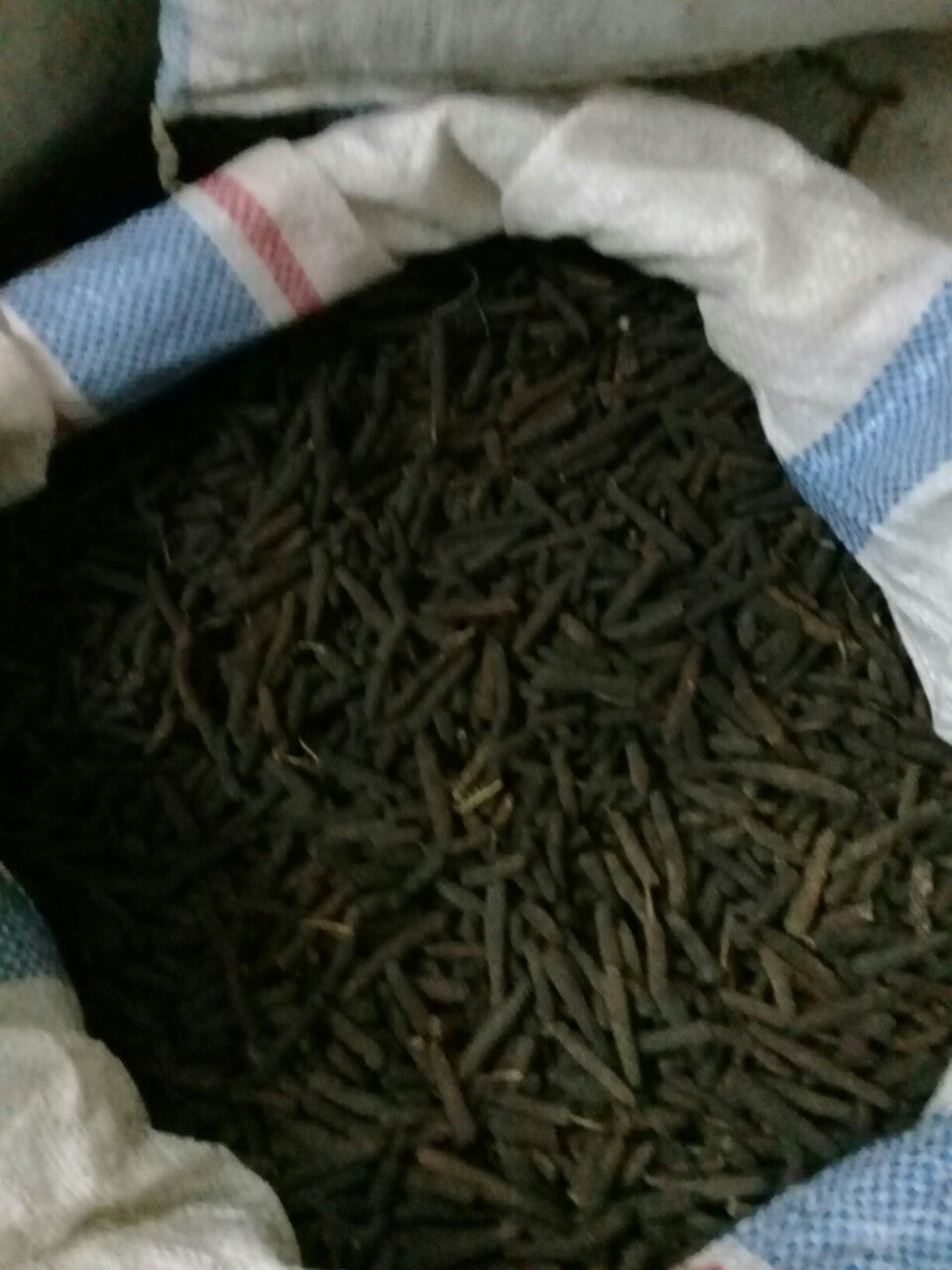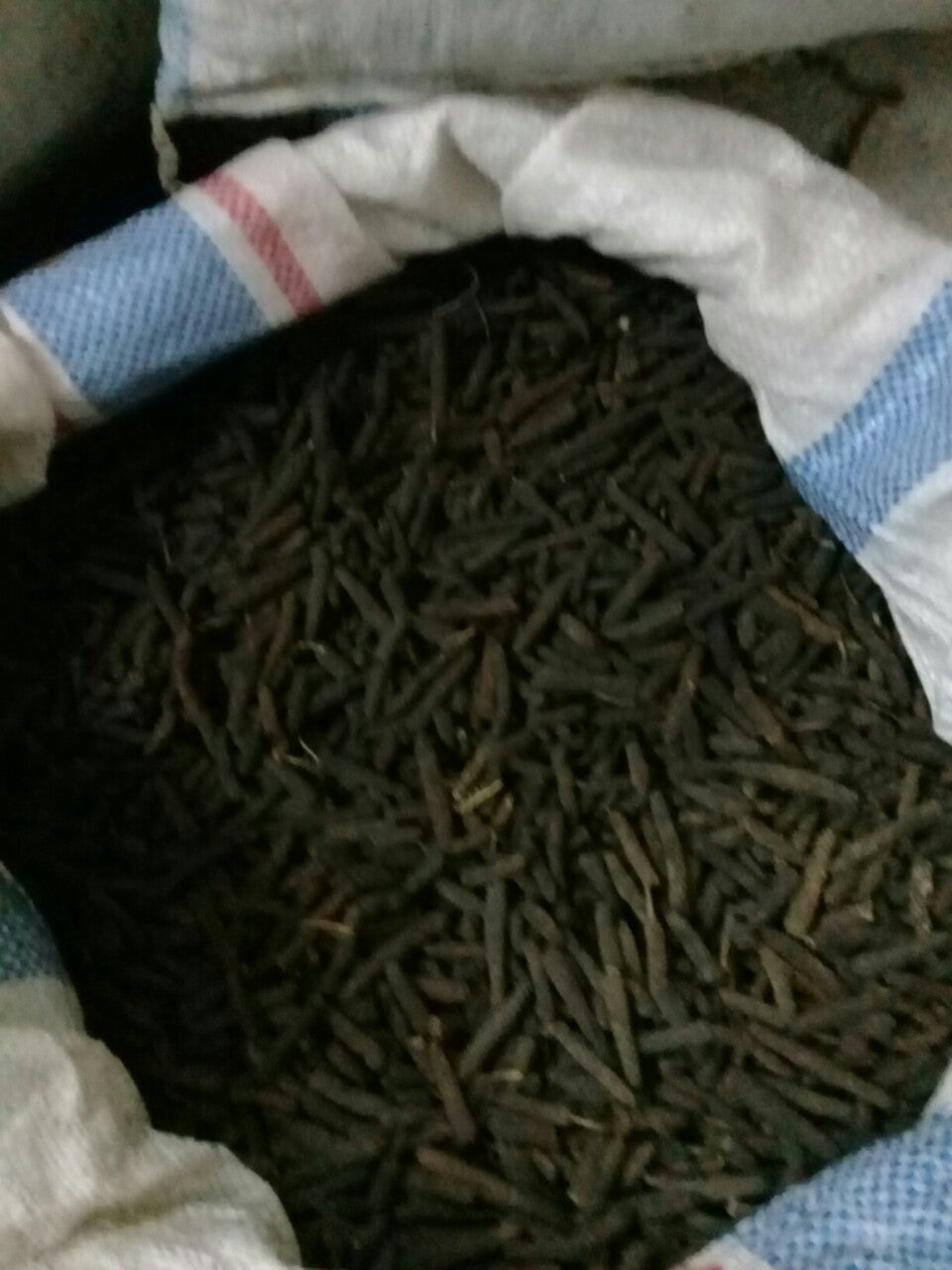starlaboratories.id
Long pepper
Long pepper
Long pepper (Piper longum) is an ancient spice from the Piperaceae family, the same family as black pepper (*Piper nigrum*). It is a climbing vine that produces small, cylindrical spikes of tiny peppercorn-like fruits. Long pepper has a history that dates back thousands of years and was highly prized in ancient civilizations, including in India, Greece, and Rome, where it was used both in cooking and medicine.
Characteristics of Long Pepper
* Appearance: Long pepper consists of long, narrow, conical spikes, typically about 2–5 cm (1–2 inches) long. The spike is covered in tiny, dark brown or reddish-brown peppercorns, giving it a rough, textured surface.
* Texture: When fresh, the spikes are firm and somewhat woody. Once dried, they become more brittle and can be broken into smaller pieces or ground.
* Aroma: The scent of long pepper is aromatic and spicy with a pungent, peppery heat and sweet, floral undertones. It has a more complex fragrance compared to regular black pepper.
* Flavor: The flavor is hotter and more intense than black pepper, with a deep, sweet, and spicy flavor that contains hints of cinnamon, cardamom, and clove. It has a unique balance of heat, warmth, and sweetness, without being as sharp as black pepper.
Culinary Uses
Long pepper is often used in traditional and regional cooking, particularly in South and Southeast Asia. Its flavor profile makes it suitable for both sweet and savory dishes.
* Spice Blends: Long pepper is used in spice mixes like garam masala (Indian curry powder), panch phoran (Bengali five-spice blend), and in some Indonesian and Malaysian spice mixes.
* Curries & Stews: It’s used to add depth to curries, especially those that are rich, meaty, or creamy. It pairs beautifully with slow-cooked dishes.
* Baked Goods: Long pepper has been used in ancient European baking recipes. It is sometimes used in cakes, pies, and even in spice cakes or gingerbread, where its warmth and sweetness complement the other spices.
* Meat Dishes: Long pepper is often added to meats like lamb, beef, or chicken for a deeper, richer spice profile.
* Vegetable Dishes: It can also be used to season vegetables, especially root vegetables, and in Indian-style vegetable stews.
* Soups & Broths: It can be ground into soups or broths for a flavorful kick, especially in complex, spiced stews or hot broths.
Common Pairings:
* Meats: Lamb, beef, chicken, pork
* Vegetables: Potatoes, eggplant, cauliflower, squash
* Other Spices: Cinnamon, cardamom, cloves, cumin, turmeric, ginger
Medicinal and Traditional Uses
Long pepper has been used in traditional medicine across various cultures, particularly in Ayurvedic medicine, and is known for its purported health benefits:
* Digestive Health: Long pepper is said to promote digestion, stimulate the appetite, and relieve issues like bloating, indigestion, and flatulence.
* Respiratory Benefits: It is often used to treat coughs, colds, and respiratory issues, as it has warming and expectorant properties that can help clear mucus.
* Anti-inflammatory: Some studies suggest that long pepper has anti-inflammatory properties, which may help with conditions like arthritis and joint pain.
* Boosts Metabolism: Traditionally, it has been considered a stimulant that may help boost metabolism and aid in weight management.
* Antioxidant Properties: Long pepper contains antioxidants that may help protect the body from oxidative stress and inflammation.
How to Use Long Pepper
* Whole: Long pepper can be used whole by adding it to soups, curries, or broths. You can remove the spike before serving.
* Ground: It is often ground fresh using a mortar and pestle, or a spice grinder, to release its aromatic oils and flavor. The ground form is great for incorporating into spice mixes, marinades, or sauces.
* Infusion: Long pepper can be steeped in hot water, milk, or broth to extract its flavor before straining. This is commonly done for making medicinal teas or adding flavor to liquids.
Why Choose Long Pepper?
* Complex Flavor: It has a more complex, layered flavor than black pepper, making it a unique addition to many dishes.
* Historical Spice: Long pepper was once considered more valuable than black pepper in ancient trade and is still used in many traditional and regional dishes around the world.
* Health Benefits: Long pepper is not only flavorful but also offers a variety of medicinal uses, especially for digestive and respiratory issues.
Storage:
Store long pepper in an airtight container, in a cool, dry place away from direct sunlight. It keeps well for several months in its whole form. Ground long pepper, like most ground spices, loses potency faster, so it’s best to grind it fresh.
Fun Fact:
Long pepper was the primary pepper in Europe before black pepper became more widely available. In fact, the ancient Romans used long pepper extensively, both in cooking and medicine, and it was considered a luxury spice during the early Spice Trade.
Order Now!
Budi Harto
Star Laboratories
Pergudangan Mutiara Margomulyo Indah C 15, Surabaya, Indonesia
Whatsapp/ Phone : +62 816 525 328
USD Price : $7500/ton

Image with text
Pair text with an image to focus on your chosen product, collection, or blog post. Add details on availability, style, or even provide a review.






